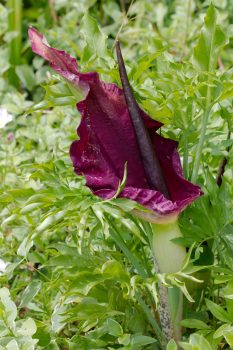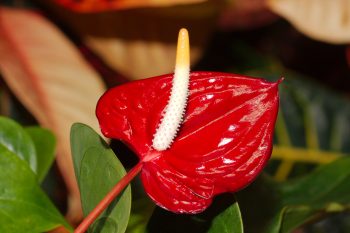Ralph told me that the other day he noticed a vulture perched on the kids old jungle gym in his back yard. Later he noticed more had gathered. At first he wondered if some animal had died and attracted them. But no, that’s not what it was. It was this plant, a dragon arum, (Dracunculus vulgaris, formerly called Arum dracunculus), a native of the central and eastern Mediterranean. This plant attracts pollinators by mimicking the smell of rotting meat. It does a good job and fooled the turkey vultures (Cathartes aura) which find dead animals primarily with their highly developed sense of smell. Black vultures (Coragyps atratus) find food primarily by sight and by following turkey vultures.
On the Missouri Botanical Garden’s page about Dracunculus vulgaris it says,
Avoid planting this perennial near windows, doors, sidewalks or other frequently populated areas where the brief but overpowering odor from the spadices will be found objectionable.


